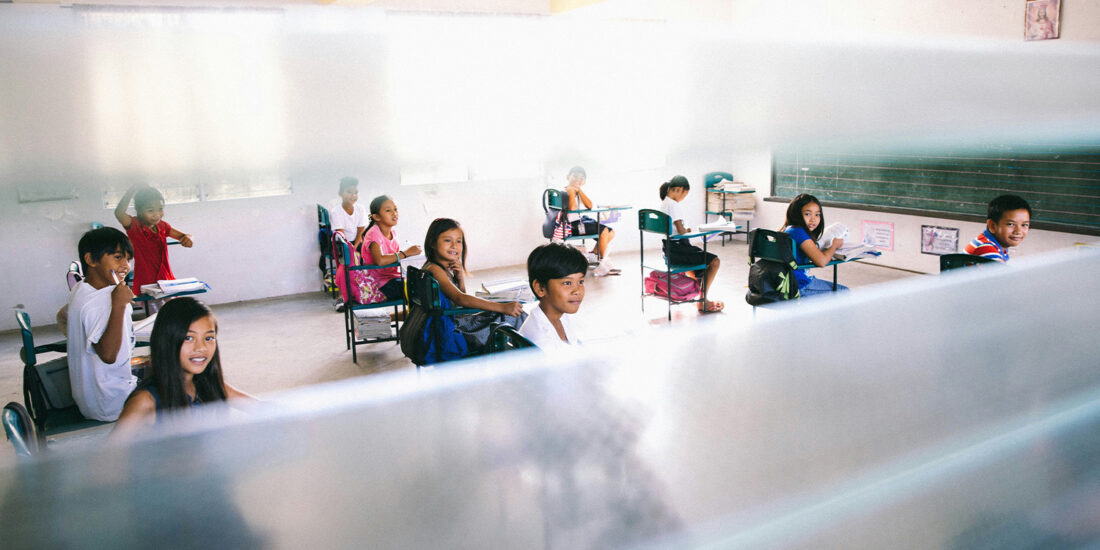Greetings readers!
Since the publication of the 2023 Language Learning in Education issue, the number of those engaged in the pursuit of learning an additional language has continued to increase. In conjunction with the burgeoning growth of second language learners is the need for adequately prepared teachers of supplementary languages who can motivate, teach with inspiration, encourage, and support language learners of all ages whose first languages are quite diverse. Clearly, individuals and groups are on the move whether because of negative factors such as domestic tragedy, political unrest, civil instability, and war or for the more positive influences of seeking a change in location, family reunification, education, adventure, the desire to learn a new language or to gain different employment. Both adverse and constructive dynamics have led to a substantial displacement of a multitude of persons who must learn another language in order to work, study, and become a member of another society. The motives for adding to one’s linguistic repertoire notwithstanding, the process is multilayered, stimulating, instructive about peoples, languages, and cultures, and often challenging.
Numerous factors influence a person’s second language acquisition. The impact of school, educators, and instruction cannot be overstated. By the time second language learners (L2 learners) have had 5-7 years of instruction in the second language (L2), it is anticipated that those with adequate instruction would be able to comprehend most instructions and content in L2. Yet, educators sometimes discover that the negative affective aspects of language learning such as anxiety, cultural bereavement, language loss, rejection of language and ethnic identity, fear of ridicule because of behavioral or linguistic errors, and a lack of motivation and interest may combine to cause a certain disequilibrium that undermines the second language acquisition process. Among forcibly displaced groups, the new language may be perceived as a type of assault on ethnic and linguistic identity. When students and educators fail to see their cultural and language experiences reflected in the target language curriculum, they may be unable to see themselves as successful in learning the additional language.
The authors of the articles in this issue have researched a wide array of topics related to L2 acquisition and second language teaching. They come from different countries, live in a variety of cultures, and speak different languages. Yet, they are united by the common language of researching, exploring, and discovering what is crucial in the quest for effectual second language acquisition.
Multilingualism, second language acquisition, second language learning, and national language policy endure as important concerns for every nation. The movement of individuals from country to country and within nations seems to intensify. As the realm of second language learners expands in size, educators, scholars, and researchers who explore the complex nature of L2 acquisition and learning are vital to the improvement of second language teaching and enhanced learning. Readers of the articles in this issue will encounter several studies that were conducted with adult language learners or the teachers of L2 learners. Commonalities that exist across nations and cultures where language learning is a consideration were similarly investigated.
Article 1
In the first article, “Language Attrition and Cultural Identity Dynamics in International Schools in Azerbaijan”, Rena Alasgarova, Jeyhun Rzayev, and Mukhammadfoik Bakhadirov investigated the relationship between language attrition, cultural identity, and sociocultural factors in four international schools in Azerbaijan. The research explored acculturation strategies concerning loss of proficiency in the first language (L1), bicultural identity, and the connection between education level, language loss and the influence of attrition on cultural identity shift.
https://doi.org/10.22492/ije.12.1.01
Article 2
Eleni Meletiadou, author of “Enriching International Students’ Cross-Cultural and Multilingual Communication: The Serious Play Approach Utilizing Playmobil Pro Figures”, implemented a study with international multilingual students who were involved in two Playmobil pro workshops. The aim was to actively engage students to develop their intercultural awareness and cross-cultural communicative skills. This case study used a qualitative design and explored students’ attitudes regarding intercultural communication.
https://doi.org/10.22492/ije.12.1.02
Article 3
In “Adults’ Perceptions of Studying English in Face-to-Face, Online, and Blended Modalities”, Tatiana Ginzburg and Linda Daniela completed a study that explored what might be the more effective teaching methodology in foreign language instruction for adult educators working with adult students. Since adult learners often experience multiple demands on their time, the researchers wanted to know whether a particular approach employed for teaching a language course for adult language learners was perceived to be more effective.
https://doi.org/10.22492/ije.12.1.03
Article 4
Ayse Taskiran and Hong Pan, authors of, “EFL Learners’ Attributions and Causal Dimensionality Styles in the Chinese Higher Education Context” wrote about the findings from a study they conducted in China to investigate achievement motivation among adult language learners studying foreign language in a variety of degree programs within different types of higher education institutions. The findings of the mixed methods study were surprising, revealing that two thirds of the participants identified themselves as ineffective learners. Both in success and failure conditions the participants mentioned effort, interest, and ability as the contributing attributions.
https://doi.org/10.22492/ije.12.1.04
Article 5
In “Intercultural Communication: The Perceptions of Lebanese High School Directors”, authors Najwa Saba ‘Ayon, Farah Sabbah, and Mira M. Alameddine wanted to discover selected Lebanese high school directors’ perceptions of intercultural communication. Results of the study revealed that while intercultural communication was considered an important learning outcome, it was seldom taught outside of the foreign language classroom.
https://doi.org/10.22492/ije.12.1.05
Article 6
Olusiji Adebola Lasekan, author of “Roles of Gender and Academic Discipline in English for Specific Purposes”, investigated the subtle yet significant relationship between gender and academic discipline in shaping the ESP needs of higher education students. The study looked at the impact of gender and academic discipline on Chilean dentistry and business administration students' perceived lack, want, and need for English for Specific Purposes (ESP). The findings suggested that educational practitioners should develop ESP curricula that attend to specific professional terms and settings as well as the roles of gender and discipline in language learning.
https://doi.org/10.22492/ije.12.1.06
Article 7
EIn “Adoption of Innovative ELT Strategies by English Language Teachers in Rural Laos”, Linda Doeden and Esther Smidt examined factors affecting the adoption of successful English language teaching strategies by Lao language teachers. Their study aimed to discern what caused Lao teachers to reject a more effective approach to teaching language. The author/researchers described the identified barriers as deriving from “internal and external realities”. Their findings pointed to the development of a more culturally relevant curriculum for the teachers.
https://doi.org/10.22492/ije.12.1.07
Article 8
Soniya Antony, R. Ramnath, and Adil Ellikkal, authors of “Examining Students’ Perspectives on Pedagogical Translanguaging in the Multilingual Classroom Context”, explored pedagogical translanguaging and its role in the multilingual classroom for adult language learners. The qualitative study examined students’ perspectives of pedagogical translanguaging in a classroom where students were multilingual and learning an additional language. The results of the study yielded recommendations for enhancing instructional strategies to be utilized in language classrooms.
https://doi.org/10.22492/ije.12.1.08
Article 9
In “Using Screencast Video Feedback in the 21st Century EFL Writing Class”, Nato Pachuashvili investigated the use of screencast video feedback when providing corrections for adult language learners in an English as a foreign language writing class. The mixed methods study looked at the effectiveness of using screencast video feedback on EFL writing and students’ perceptions of receiving video feedback for their written assignments. The findings divulged that students considered video feedback to be interactive and supportive of the learning-to-write in a foreign language process.
https://doi.org/10.22492/ije.12.1.09
Article 10
Kira Adams and Sachiko Nakano, authors of “Connecting Student Interest and Motivation in English to the Sustainable Development Goals”, explored motivation and interest for adult English as a foreign language (EFL) learners in Japan. Their study investigated the use of the Sustainable Development Goals (SDGs), established by the United Nations, as a motivational and interest stimulating tool. Through this research, Adams and Nakano had students identify which SDGs were most interesting and, therefore, intrinsically motivational in classes where language was taught using topics of personal relevance.
https://doi.org/10.22492/ije.12.1.10
The topics researched and discussed in the 2024 issue of the IAFOR Journal of Education: Language Learning in Education will enlighten and encourage the reader about the critical thinking and innovative research that is ongoing in the field of second language acquisition and second language learning.
Happy reading!
Happy reading!
Melinda Cowart
Texas Woman’s University, USA
Editor, IAFOR Journal of Education: Language Learning in Education

